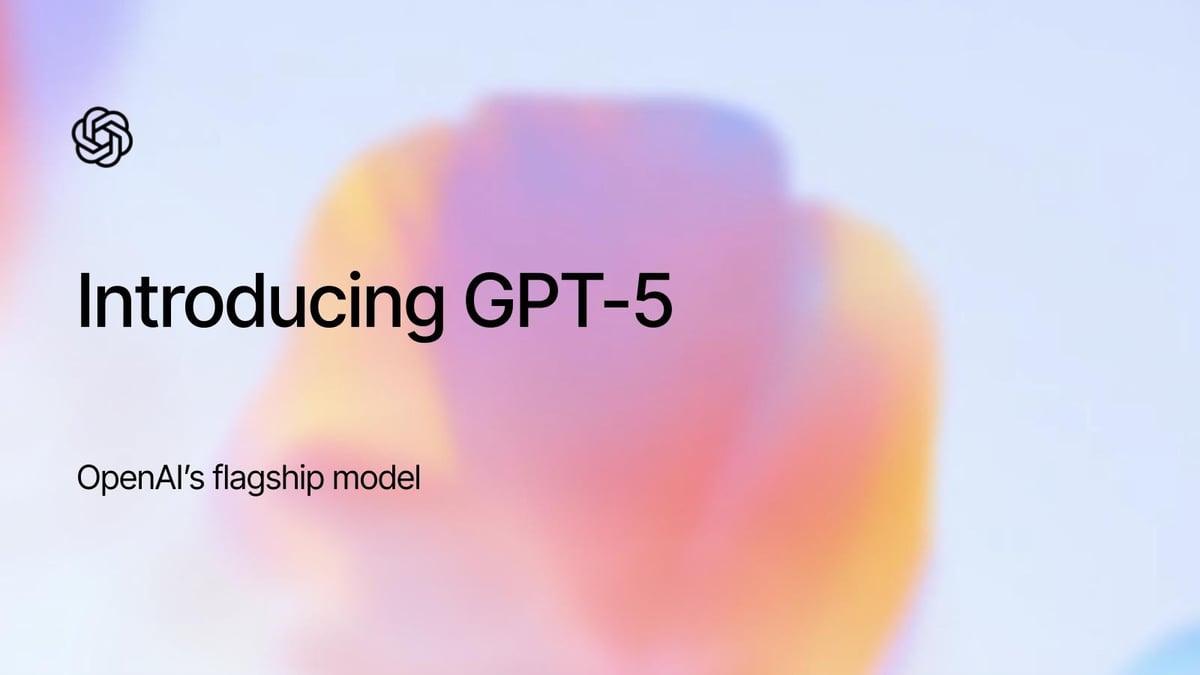Article
August 7, 2025 · Last updated on August 13, 2025
Introducing GPT-5

# Work Users
OpenAI's most advanced model yet

Introducing GPT-5
GPT-5 brings together all of our research breakthroughs into a unified experience for our smartest, most reliable AI system yet. Check out our blog announcement here.
What’s different?
GPT‑5 is a unified system with a smart, efficient model that answers most questions, a deeper reasoning model (GPT-5 thinking) for harder problems, and a real‑time router that quickly decides which to use based on conversation type, complexity, tool needs, and your explicit intent.
With GPT-5, users don’t need to choose the “right” model for their tasks – ChatGPT now automatically adapts to the task, delivering faster, higher-quality, and more reliable results.
- Deeper reasoning: GPT-5 automatically “thinks harder” on complex, multi-variable questions. For example, it can weigh trade-offs across dimensions in a structured way, whereas previous models may have defaulted to surface-level insights.
- Comprehensive professional outputs: GPT-5 generates professional, long-form deliverables, and responses are more structured, polished, and aligned to business contexts.
- Better synthesis: GPT-5 can integrate insights from multiple uploaded reports, datasets, or connected apps (e.g., information from your own Google Drive) for evidence-based recommendations.
- Reliability & clarity: GPT-5 is fast and reliable, delivering accurate, professional responses and clarifying tasks instead of guessing. It feels like collaborating with a thoughtful colleague you can trust.
Try it out for yourself
GPT-5 is better at writing. Produce comprehensive on-brand documents and reports in minutes.
“Draft a 15-page annual impact report for a mid-sized sustainability consulting firm. Use a professional, on-brand tone and structure the document with an executive summary, 4 themed sections (market trends, client success stories, innovation highlights, and financial overview), and a concluding outlook. Include supporting data visualizations where appropriate and ensure the writing style aligns with Fortune 500 corporate reports.”
GPT-5 is better at research and analysis. Summarize large datasets quickly and accurately.
"Analyze this uploaded CSV of global retail sales (3 years, 12 markets, 200k rows). Identify top-performing regions, seasonal sales trends, and product category outliers. Then create a 5-page insights brief with charts and a one-page executive summary that highlights growth opportunities and risk areas, citing specific data points.”
GPT-5 is better at problem-solving. Handle multi-step business problems with accuracy.
"Evaluate three options for reducing supply chain costs by 15%: (1) nearshoring production, (2) renegotiating supplier contracts, and (3) investing in logistics automation. For each option, assess cost implications, timeline to savings, regulatory impact, and potential risks. Create a comparative table, run ROI projections under conservative, base, and optimistic scenarios, and recommend the best path forward with a phased implementation plan.”
Every user in every department gets value from GPT-5
Department | Use Case | Prompt | URL |
Engineering | Multi-repo architecture review | Act as a principal engineer. Analyze these architecture diagrams and code snippets from three repositories [attach files or links]. Identify scalability, security, and maintainability risks, and recommend a revised architecture with diagrams and rationale. | |
Sales | Strategic account plan | Create a strategic account plan for [customer name] using these CRM notes, recent meeting transcripts, and product usage reports [attach data]. Include objectives, risks, opportunities, stakeholders, and next actions with timelines. | |
Marketing | Product launch content kit | Develop a multi-channel content kit for the launch of [product name], including a press release, 3 social posts, an email announcement, and a blog draft. Use the brand voice guide [attach file] and highlight key differentiators. | |
Finance | Quarterly forecast & variance analysis | Using last quarter’s financial statements and budget [attach files], create a forecast for the next quarter. Highlight key variances, risks, and opportunities, and propose mitigation strategies. | |
Operations | Process optimization plan | Evaluate the current workflow for [process name] using these SOP documents and recent performance metrics [attach files]. Identify inefficiencies, propose improvements, and outline an implementation roadmap. |
Key actions for workspace admins and owners
- Share the announcement with your team: Your team members will now have a better, more simplified experience. This is a great time to explore new use cases, refresh training on best practices, and encourage them to experiment with GPT-5’s improved capabilities in their daily workflows. Share resources on the OpenAI Academy for Work, or use an email template from our Admin resources. Note: On August 7th (and the following week for Enterprise), GPT-5 will become your default model with unlimited* messages. Teams users are able to use GPT‑4o, OpenAI o3, o4‑mini, GPT‑4.1, and GPT‑4.5 with the same limits as today for the first 60 days after launch. Enterprise Admins must toggle back to legacy models for their teams in Admin Settings.
- Review and enable connectors: With GPT-5, connectors are smarter—ChatGPT now retrieves and synthesizes information from your company’s apps and files with greater accuracy, depth, and context-awareness. Enterprise admins and owners can review and enable connectors workspace-wide in their Workspace Settings.
- Review custom GPTs: Custom GPTs will keep their current recommended model until mid-October. If no recommended model is set, they’ll stay on GPT-4o until then. After that, they’ll move to the best-fit GPT-5 model based on their configuration. Builders can switch GPTs to GPT-5 at any time.
*Subject to guardrails that prevent abuse or misuse

